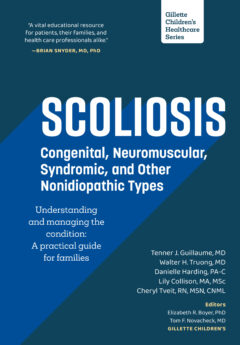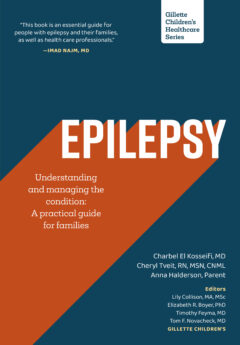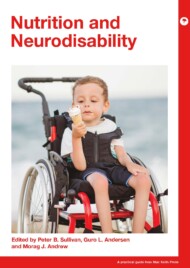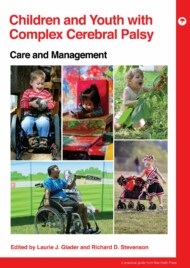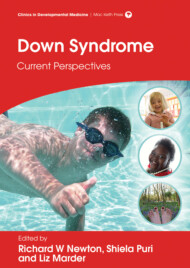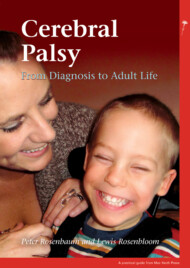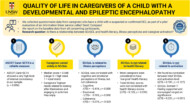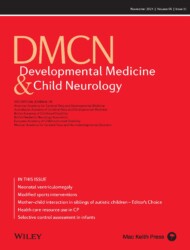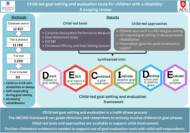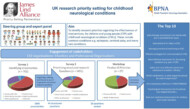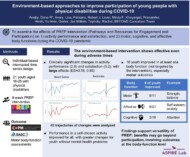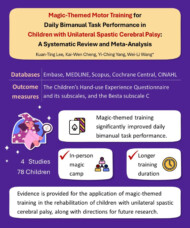Welcome
Start exploring here! We hope this will be a useful resource to help you find the information you need about cerebral palsy and other childhood-onset disabilities. We want to help you to find answers to your questions – so please let us know what else you would like us to cover. Here we are presenting videos, summaries, research information and other resources.
Read on for more
Ways we can help
1
Family-friendly Books
Discover our collection of family-friendly books featuring accessible, research-based insights. These titles include the perspectives of families and individuals with lived experience, offering valuable guidance while supporting parents on their journey.
2
Free Chapters
We have selected a range of chapters from our books, offering helpful insights and practical tips. Our chapters summaries highlight key points. View the full chapter to explore each topic in more depth.
3
The Knowledge Bank
Explore the answers to your questions here. Find out more about conditions, treatments, interventions, and all aspects of care. Follow signposts to find more in-depth, evidence-based information from Mac Keith Press content, as well as other great sources of knowledge.
4
Plain Language Summaries
Plain language summaries are an effective way of communicating scientific research to a wider audience. By presenting the key findings and significance of a study in easy-to-understand language, the content becomes more accessible to more people. Here we present summaries of papers published in Developmental Medicine & Child Neurology (DMCN).
5
Helpful Videos
Here you will find a collection of short videos from authors and editors summarising their work. They cover Developmental Medicine & Child Neurology (DMCN) articles, Mac Keith Press books and e-learning. The aim of the videos is to help viewers get a clear understanding of why the research is important, how it was carried out, and real-world implications.
Gillette Children’s Healthcare Series
The goal of the Gillette Children’s Healthcare Series is to empower families through a greater understanding of their condition and therefore help optimize outcomes for children, adolescents and adults living with these childhood-acquired and largely lifelong conditions.
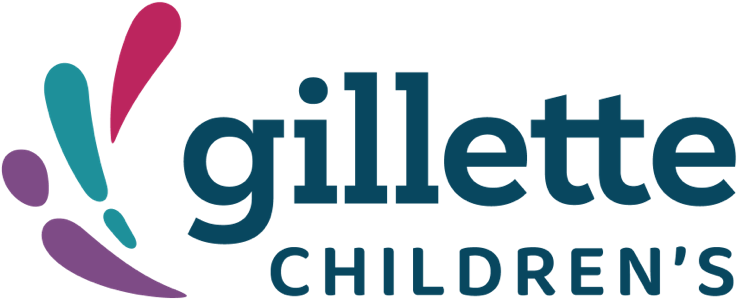
Free chapter downloads
The Knowledge Bank
Explore the answers to your questions here. Find out more about conditions, treatments, interventions, and all aspects of care. Follow signposts to find more in-depth, evidence-based information from Mac Keith Press content, as well as other great sources of knowledge.
What happens during an EEG test?
During an EEG test, electrodes are placed on the scalp to measure and record the brain’s electrical activity, generating a visual graph of brain waves. The test is used to detect abnormal electrical patterns that may indicate epilepsy or other neurological conditions.
What happens during an EEG test?
This answer is adapted from chapter 4 of the Gillette Children’s Healthcare Series book on Epilepsy, understanding and managing the condition: a practical guide for families. Purchase the book here.
During an EEG test, electrodes are placed on the scalp to measure and record the brain’s electrical activity, generating a visual graph of brain waves. The test is used to detect abnormal electrical patterns that may indicate epilepsy or other neurological conditions.
The EEG may be performed with simultaneous video recording (called video EEG or VEEG), which allows healthcare providers to observe the individual’s behavior and movements while recording brain activity. This helps distinguish between seizures and events that resemble seizures but are not caused by abnormal electrical discharges.
The medical professional evaluates the brain wave patterns, as well as the individual’s level of awareness, motor signs, and nonmotor symptoms during the recording.
EEG records only live events, however, so it is possible that no events will occur during the EEG. If certain triggers are identified for the individual, those can be used to try to induce a seizure during EEG. Watching flashing lights, hyperventilating (breathing rapidly), closing eyes, opening eyes, and other actions are often performed during EEG to try and trigger an event. Medical professionals may also request that the individual be sleep deprived since lack of sleep may be a trigger for seizures. Some seizures occur more often with sleep, so an overnight stay in the hospital may help capture events related to sleep. EEG can be done in either outpatient or inpatient settings. Typically, an outpatient EEG test lasts from 20 minutes to several hours, and an inpatient
EEG test lasts from one to several days (or weeks in rare instances).
What are the causes of epilepsy?
The causes of epilepsy include structural, genetic, infectious, metabolic, and immune factors. Or, as in approximately 50 percent of epilepsy cases worldwide the cause can remain unknown. Determining the cause, when possible, helps guide management and can provide clues to long-term prognosis.
What are the causes of epilepsy?
This answer is adapted from chapter 6 of the Gillette Children’s Healthcare Series book on Epilepsy, understanding and managing the condition: a practical guide for families. Purchase the book here.
The causes of epilepsy include structural, genetic, infectious, metabolic, and immune factors. Or, as in approximately 50 percent of epilepsy cases worldwide the cause can remain unknown. Determining the cause, when possible, helps guide management and can provide clues to long-term prognosis.
Structural epilepsy results from a distinct brain abnormality, such as a lesion or tumor, and often presents with focal onset seizures.
Genetic epilepsy is caused by or closely associated with changes in genes, which may be inherited or occur as new mutations (de novo). It is often suspected when epilepsy begins very early in life and can present with any seizure type.
Infectious causes may include conditions like meningitis or encephalitis, while metabolic causes can involve imbalances in blood sugar, electrolytes, or other body chemicals.
Immune-related causes involve autoimmune processes that affect the brain and may trigger seizures.
How is epilepsy usually treated?
Epilepsy is usually managed with a combination of pharmaceutical, non-pharmaceutical, and other medications or supplements. The primary treatment approach typically begins with antiseizure medications, which are used as monotherapy (one medication) or polytherpay (several medications used in combination)to control seizures.
How is epilepsy usually treated?
This answer is adapted from chapter 8 of the Gillette Children’s Healthcare Series book on Epilepsy, understanding and managing the condition: a practical guide for families.
The difference in meaning between “management” and “treatment” is subtle. “Management” is the broader term, considering all aspects of an individual’s life, whereas “treatment” is the use of a specific intervention, such as medication or surgery. Management and treatment aim to promote optimal participation in daily life by enhancing activities and minimizing problems with body functions and structure. Varying treatment options are available for epilepsy, but all need to be considered under the broad topic of management, ensuring all aspects of the individual’s life are considered.
Epilepsy is usually managed with a combination of pharmaceutical, non-pharmaceutical, and other medications or supplements. The primary treatment approach typically begins with antiseizure medications, which are used as monotherapy (one medication) or polytherpay (several medications used in combination)to control seizures. These medications are often effective and are the first-line treatment for most people with epilepsy.
If seizures are not controlled with medication, or if the epilepsy is drug-resistant, non-pharmaceutical treatments may be considered. These include:
- The ketogenic diet, a high-fat, low-carbohydrate diet that has been shown to reduce seizures in some individuals, particularly children.
- Neuromodulation, such as vagus nerve stimulation (VNS), which uses electrical pulses delivered via a surgically implanted device to help reduce seizure frequency.
- Epilepsy surgery, which may be an option for people with focal epilepsy and identifiable brain lesions or areas of seizure onset that can be safely removed.
Other medications or supplements may include:
- Immunotherapies, steroids or adrenocorticotropic hormone therapy which may be prescribed for epilepsy with a specific cause or for particular epilepsy syndromes, either in addition to or instead of antiseizure medications.
- Vitamins or supplements, such as vitamin B6 or coenzyme Q10, which may help in specific cases.
- Medical cannabis or cannabidiol (CBD), which has shown benefit in some treatment-resistant forms of epilepsy, such as Dravet syndrome or Lennox-Gastaut syndrome.
Management plans are often individualized and may combine multiple approaches, such as using antiseizure medications alongside the ketogenic diet or neuromodulation. Long-term monitoring is essential to assess treatment effectiveness and adjust therapy as needed.
For more information on treatments including medical cannabis or cannabidiol (CBD), please see the plain language summary of the DMCN paper ‘Epilepsy and cannabis: So near, yet so far’.
What other health problems can occur with epilepsy?
Approximately 70 percent of children with epilepsy have at least one comorbidity. Comorbidities may be present before the epilepsy diagnosis, they may occur with the epilepsy diagnosis, or they may develop later.
What other health problems can occur with epilepsy?
This answer is adapted from chapter 9 of the Gillette Children’s Healthcare Series book on Epilepsy, understanding and managing the condition: a practical guide for families.
People with epilepsy often experience comorbidities—other health conditions that occur alongside epilepsy. Approximately 70 percent of children with epilepsy have at least one comorbidity. Comorbidities may be present before the epilepsy diagnosis, they may occur with the epilepsy diagnosis, or they may develop later. Comorbidities may exist by chance, or comorbidities may share the same risk factors or causes as epilepsy. Comorbidities can include:
- Neurological and neurodevelopmental comorbidities. Conditions that affect the nervous system are termed “neurological.” Epilepsy itself is a neurological condition, and other neurological conditions frequently coexist with epilepsy as comorbidities. Since the nervous system affects all areas of the body, the impact of neurological comorbidities is often broad. Neurodevelopmental conditions begin in the developmental periods (infancy, childhood, and adolescence) and interfere with how the brain functions, leading to issues including those that impact cognition, social skills, and emotions. Neurological and neurodevelopmental conditions that may occur alongside epilepsy include cerebral palsy, ADHD, developmental delay, and learning disorders.
- Physical comorbidities, are conditions that affect the physical functioning of the body. These may include musculoskeletal system disorders, cardiovascular system disorders, autonomic nervous system disorders and obesity.
- Psychiatric comorbidities, including depression, anxiety, and bipolar disorder, affect mood, thinking, and behavior. They may also be called mental health or behavioral disorders. They are one of the most common comorbid conditions in epilepsy, with psychiatric and behavioral problems reported in 35 to 50 percent of children with epilepsy.
These comorbidities can significantly impact overall health, treatment response, and quality of life. Therefore, a comprehensive approach to epilepsy management includes screening and treating these associated conditions.
Submit a question
Let us know what other questions you have. Are there specific topics you would you like us to cover?
Contact us now using the form.
Plain Language Summaries
Plain language summaries are an effective way of communicating scientific research to a wider audience. By presenting the key findings and significance of a study in easy-to-understand language, the content becomes more accessible to individuals with disabilities, parents, caregivers, and others. Here we present summaries of papers published in Developmental Medicine & Child Neurology (DMCN).
Helpful videos
Here you will find a collection of short videos from authors and editors summarising their work. They cover Developmental Medicine & Child Neurology (DMCN) articles, Mac Keith Press books and e-learning. The aim of the videos is to help viewers get a clear understanding of why the research is important, how it was carried out, and real-world implications.
UK research priority setting for childhood neurological conditions| Jill Cadwgan & Rhys Inward |DMCN
Contact us
Please feel free to contact us if you have any feedback or suggestions:
